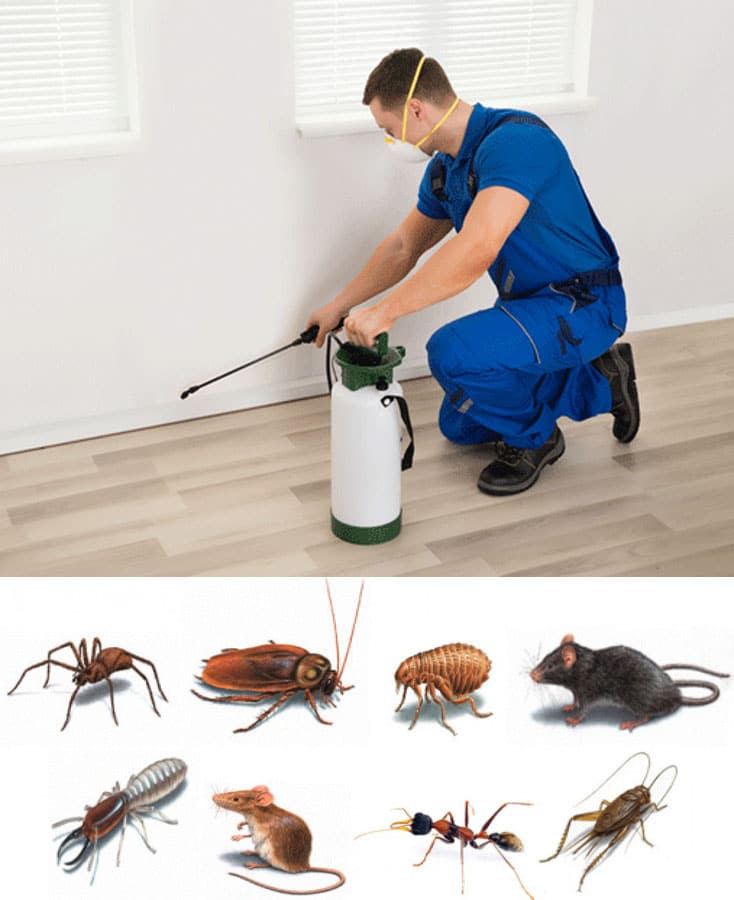Experienced A1 Exterminators Charlotte NC - Fast and Reputable Solutions
Experienced A1 Exterminators Charlotte NC - Fast and Reputable Solutions
Blog Article
Bed Bug Treatment Failure: Comparing Chemical Vs. Non-Chemical Solutions
In the world of parasite control, particularly when dealing with the relentless concern of bed bugs, the option between chemical and non-chemical treatment options can be a pivotal one. Both approaches provide distinct advantages and downsides, affecting factors such as effectiveness, safety and security considerations, and general expense. By examining the nuanced information of each technique, a clearer understanding of which course to go after in addressing a bed insect invasion can be attained.
Effectiveness of Chemical Treatments
Chemical treatments for bed bug infestations have been commonly acknowledged for their fast and powerful efficacy in eliminating these insects. When considering the efficiency of chemical treatments, it is important to comprehend that they can supply a fast and complete remedy to a bed insect problem. Professional pest control experts commonly rely upon pesticides to target bed insects at different stages of their life process, consisting of eggs, fairies, and grownups. These chemicals normally work by interrupting the bed insects' nerve system, bring about paralysis and ultimate death.
Moreover, chemical therapies have the advantage of offering recurring results, indicating that they can continue to remove bed pests even after the first application. This residual action is especially helpful in combating any type of potential re-infestations. Additionally, the fast action of chemical treatments can bring relief to individuals dealing with extreme bed pest invasions, enabling them to regain control of their space rapidly.
Safety Concerns With Chemical Solutions
One vital element that requires mindful consideration when utilizing chemical solutions for bed pest treatment is guaranteeing the security of occupants and the atmosphere. While chemical treatments can be efficient in eradicating bed pests, they might posture dangers if not taken care of appropriately. One of the key security worry about chemical services is the potential injury they can create to human health and wellness. Exposure to specific chemicals used in bed bug therapies can cause breathing issues, skin irritability, or various other damaging reactions, particularly in individuals with pre-existing problems or sensitivities. In addition, improper application or dosage of chemical pesticides can result in hazardous deposits remaining in the treated location, posturing lasting health and wellness threats to passengers.
Furthermore, the ecological effect of chemical remedies is one more substantial consideration. Some chemicals used in bed insect therapies may be dangerous to useful pests, wild animals, and ecological communities if they leach right into the soil or water supply. It is necessary to make use of chemical treatments deliberately, complying with security standards, and considering much less harmful choices to reduce these dangers and make sure the reliable and secure management of bed insect infestations.
Benefits of Non-Chemical Techniques
Considering the prospective security issues and ecological influence connected with chemical remedies for bed pest treatment, exploring non-chemical methods provides an appealing option with numerous distinctive advantages. Non-chemical approaches supply a much safer alternative for households, particularly those with individuals, pets, or youngsters conscious severe chemicals. These strategies eliminate the dangers of direct exposure to hazardous compounds, decreasing the potential for negative wellness impacts. Additionally, non-chemical treatments are eco pleasant, as they do not add to air have a peek at this site or water contamination, making them a sustainable choice for parasite control.
In addition, non-chemical options can be reliable in targeting bed bugs, consisting of hard-to-reach locations where chemical therapies might not permeate - A1 charlotte pest control companies. Techniques such as warm therapy, vacuuming, heavy steam cleaning, and bed mattress encasements give extensive obliteration without the usage of harmful chemicals.
Limitations of Non-Chemical Treatments

Furthermore, non-chemical therapies frequently need several applications to attain successful removal. This can be taxing and might not constantly ensure full removal of all bed bugs and their eggs, particularly in hard-to-reach or covert locations.
In addition, the success of non-chemical therapies greatly depends on correct implementation and thoroughness, which can be challenging for people without specialist proficiency. Poor application of non-chemical methods may lead to insufficient obliteration, causing persistent problems and the need for added therapies.
For that reason, while non-chemical therapies have their benefits, it is important to recognize these constraints and consider them when determining the most efficient technique for managing bed bug infestations.
Cost Comparison: Chemical Vs. Non-Chemical Options
Offered the limitations linked with non-chemical treatments, an essential aspect to review in the context of bed bug administration is the price comparison between chemical and non-chemical alternatives. In contrast, non-chemical treatments like warmth treatment or vapor can be extra expensive, with expenses varying from $1,000 to $6,000 for an entire home. While the preliminary cost of chemical therapies may seem reduced, numerous treatments may be needed to totally get rid of the infestation, potentially raising the overall expense.
Verdict

Taking into consideration the prospective security problems and ecological impact associated with chemical options for bed bug more therapy, discovering non-chemical techniques provides a promising option with numerous distinctive advantages.Offered the constraints linked with non-chemical therapies, an essential aspect to evaluate in the context of bed insect monitoring is the price comparison in between chemical and non-chemical choices. In contrast, non-chemical treatments like heat treatment or steam can be extra pricey, with costs varying from $1,000 to $6,000 for a whole home. While the first cost of chemical therapies may seem lower, multiple therapies may be needed to totally get rid of the problem, potentially enhancing the general cost.In final thought, when comparing chemical and non-chemical bed insect treatment options, it is crucial to think about effectiveness, safety, benefits, constraints, and price.
Report this page